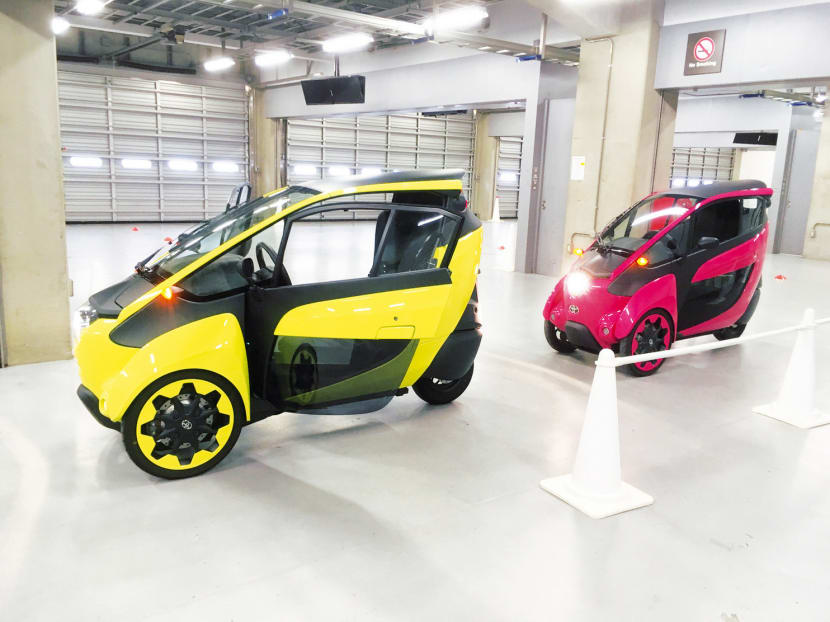Look at what i-Road today
Could this be the answer to Singapore’s car-lite needs? The i-Road is a Toyota like no other. It runs on electricity, has only three wheels, and is slightly narrower than a large motorcycle.

The i-Road could be perfect for a quick trip to the mini-mart. Photo: Big Fish
Could this be the answer to Singapore’s car-lite needs? The i-Road is a Toyota like no other. It runs on electricity, has only three wheels, and is slightly narrower than a large motorcycle.
Toyota built it to explore how electric vehicles could be part of the transport system if they were mostly used for short hops — its range is about 50km, and its maximum speed is just 60kmh. Urban commuters, active seniors and mothers who have to drop a child off at the neighbourhood school are some target users.
I could suggest one more: Fun-seekers.
Like some other three-wheelers, the i-Road leans into corners like a downhill skier, which helps its high-speed stability. You twirl a steering wheel and the rear wheel pivots, making the tricycle’s tail swing out like a forklift, or a car that is drifting. In the narrow cockpit, threading it between pillars inside the pit building of the Fuji Speedway felt like flying a fighter jet between buildings.
The 300kg i-Road is simple enough for a child to operate, too. You climb in through a large plastic door, belt up, turn the key and release the parking brake. Then push the “D” button and you’re off.
The i-Road is rather rudimentary — it has a seatbelt so occupants are safe without a crash helmet, but no airbag or anti-lock brakes. A simple display tells you your speed and the battery’s state of charge.
The plastic doors feel flimsy, the rear seat looks like even a child might find it snug, and there is no ventilation system. It may look cool, but in our weather, riding in one would not be. But a machine like this could be ideal for Singapore. “Electric vehicles have a limitation due to battery capacity, and so cruising distance is quite limited. It could be suitable for neighbourhood shopping, or other short-distance trips,” said Hisashi Nakai from Toyota’s public affairs division.
Toyota does not sell the i-Road yet, but it has been used in car-sharing and mobility trials in Japan and France. Other car makers are experimenting with similar vehicles. The Renault Twizy, for example, is a similar no-frills electric vehicle for short journeys. It was brought to Singapore by Wearnes Automotive, which attempted to market it as a motorcycle.
The fact that the Twizy has four wheels, however, means it would have been classified as a car by the Land Transport Authority.
Perhaps the three-wheel i-Road could be sold here as a motorcycle, but it is hard to see the need to own one. In Singapore, fleets of the Toyotas could be used to provide the “final mile” journey between an MRT station and housing blocks in HDB estates.
And given how fun the i-Road is to drive, it might shift the car-lite debate from a matter of “Who needs a car?” to “Who wants one?”





